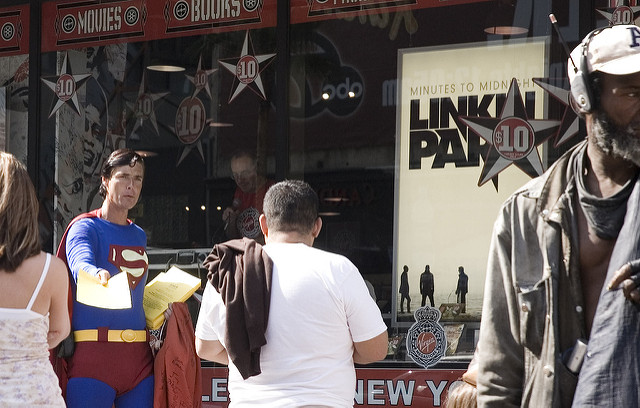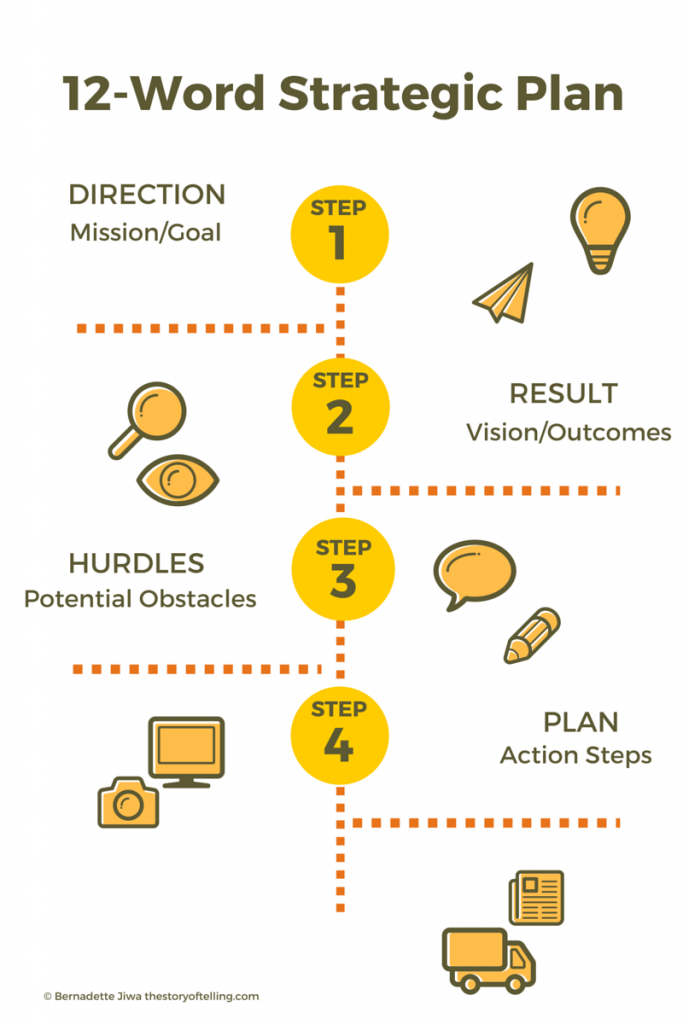Unlock the Magic in Your Story Now
Get the Free 20 questions to Ask Before Launching Your Idea workbook when you sign up for occasional updates.
Get the Free 20 questions to Ask Before Launching Your Idea workbook when you sign up for occasional updates.
True Advantages
filed in Marketing, Storytelling
 If I asked you to list the advantages any global brand has over its competitors you’d likely think of things like access to capital, distribution networks, and other resources that the average business doesn’t have. But these brands are the outliers.
If I asked you to list the advantages any global brand has over its competitors you’d likely think of things like access to capital, distribution networks, and other resources that the average business doesn’t have. But these brands are the outliers.
When it comes down to it, most businesses have access to similar resources, raw materials, and human capital. Every pizza is made with flour, cheese, and tomato. So why do queues form at this place and not that one? What drives the demand that’s responsible for success?
The one true advantage we all have at our fingertips is how we make people feel, and the story they leave with. Sometimes that story is a two-hour wait, a $5 price tag for a single slice, or a hand-made pizza crafted by a man who has been making them for 50 years.
Understanding how people will tell the story to others is an advantage every business can own.
Image by Lucas Richarz.
Share this article
The Difference Between Average And Exceptional
 The service at the restaurant is only as good as the investment the manager makes in staff training.
The service at the restaurant is only as good as the investment the manager makes in staff training.
The quality of the website’s user experience is a reflection of how many hours the developer spends testing and tweaking.
The hours of research the journalist conducts before writing a single word shines through in the genius of the article.
We tend to focus the majority of our thinking on the moment of the performance, forgetting that it’s the work we do leading up to it that makes all the difference. The things we do when the customer isn’t looking is what creates moments of delight.
What differentiates the average from the exceptional is not performance, it’s preparation.
Image by Hernán Piñera.
Share this article
Responsive Marketing
filed in Marketing, Storytelling
 There are two approaches to selling memberships at the local gym. The first is to show the prospective member the facilities—highlighting the abundance of equipment and classes, and then to offer a ‘limited time only’ joining discount. The second is to spend time listening to the reasons why he wants to join in the first place and then to tailor the sales conversation to those needs.
There are two approaches to selling memberships at the local gym. The first is to show the prospective member the facilities—highlighting the abundance of equipment and classes, and then to offer a ‘limited time only’ joining discount. The second is to spend time listening to the reasons why he wants to join in the first place and then to tailor the sales conversation to those needs.
Two Things Your Marketing Messages Must Do
1. Communicate to the customer that you have understood his unmet needs or unspoken desires.
2. Paint a picture of the customer as the hero of the story in the presence of your product (a lot of marketing messages have this backward).
Average marketing is filled with statements of fact. Great marketing is a response to the customer’s problems and desires. It’s the difference between, ‘this is better’ and ‘this is how we can help you to be better’.
Image by midwestnerd
Share this article
Everything To Everyone
 While I was consulting with a client last week we got talking about people who had built powerful personal brands and the reasons for their success. When we stopped at one in particular, her reaction was immediate.
While I was consulting with a client last week we got talking about people who had built powerful personal brands and the reasons for their success. When we stopped at one in particular, her reaction was immediate.
“I don’t like him.” she said, as her nose wrinkled.
Of course, she has never met this person, but that doesn’t mean that she hasn’t formed a strong opinion about his values, ethics, and intentions.
It’s tempting to believe that success, influence or impact means winning over everyone. It doesn’t.
You can never know who everyone is and what everyone thinks, but you can know what your right people care about and want to align themselves with.
Don’t aim to be everything to everyone. Aim to be something to someone.
Image by Pabak Sarkar
Share this article
The First Rule Of Increasing Brand Awareness
 Sustainable growth is the goal of every business and conventional wisdom tells us that in order to grow we need to command more attention. Ironically, when we begin thinking about how to increase brand awareness we often shift our gaze internally.
Sustainable growth is the goal of every business and conventional wisdom tells us that in order to grow we need to command more attention. Ironically, when we begin thinking about how to increase brand awareness we often shift our gaze internally.
We work on differentiating from our competitors. We articulate whatever we believe our edge to be. We get just a little louder, all the while forgetting that if we want people to notice us we need to get better at noticing them first.
The first rule of increasing brand awareness is to improve your customer awareness.
What three things could you do today that will help you do that?
Image by Ashley Ringrose.
Share this article
Why Startups Fail
filed in Innovation, Success
 Take a look at this list of reasons startup founders give for failing. These are just some of them. The cost of customer acquisition, ahead of its time, wrong positioning, not enough income, no problem solution fit, wrong target market, low customer adoption, too early, not enough demand, no real audience and too much ego. What all 134 reasons point to is that the companies didn’t make something enough people wanted.
Take a look at this list of reasons startup founders give for failing. These are just some of them. The cost of customer acquisition, ahead of its time, wrong positioning, not enough income, no problem solution fit, wrong target market, low customer adoption, too early, not enough demand, no real audience and too much ego. What all 134 reasons point to is that the companies didn’t make something enough people wanted.
It’s easy to fall in love with our ideas. The trick is to take our rose-tinted spectacles off for long enough to understand exactly why, in a world of infinite choices people will notice, care, choose and pay us for them. Don’t tell us what you made. Tell us why it’s going to matter.
Image by Reinis Traidas.
Share this article
The Difference Between Saying You Care And Caring
filed in Marketing, Storytelling
 I’m not sure when we became defensive about customer care became. I suspect it might have been when we began to put more distance between the customer and us. In the days when there was a cash register that rang with ‘real money’, when we sold eye-to-eye and transacted hand-to-hand, instead of digitally, we had no choice but to ‘see’ our customers. The transaction itself was as good as a handshake. Word and bond. No us and them, only us.
I’m not sure when we became defensive about customer care became. I suspect it might have been when we began to put more distance between the customer and us. In the days when there was a cash register that rang with ‘real money’, when we sold eye-to-eye and transacted hand-to-hand, instead of digitally, we had no choice but to ‘see’ our customers. The transaction itself was as good as a handshake. Word and bond. No us and them, only us.
Now we build barriers. We expect the customer, not the company, to take responsibility. We create guarantees that protect us from having to fulfil them. We armour up against customers. We require proof of purchase that leaves no room for us to be exploited by the shady few and sadly, fewer opportunities to delight the honest majority.
So when we find a company that cares, no questions asked we should celebrate them. When I buy a Crumpler bag it comes with a lifetime warranty. If it fails, I can bring it back, and they will repair it. The only proof of purchase I need is the product that let me down. What a breath of fresh air.
Caring is simpler than you think. What story does your customer care tell about your company?
Image by Anna D.
Share this article
The 12-Word Strategic Plan
filed in Innovation, Strategy
 Have you ever found it difficult to plan, communicate or execute on a project, idea or strategy?
Have you ever found it difficult to plan, communicate or execute on a project, idea or strategy?
This 12-word framework will help you to get clear on where you’re headed and why—enabling you to lead yourself or your team and achieve your objectives.
It works for projects big and small, both personal and professional.

Use this version of Dollar Shave Club’s strategic plan that I created using the framework as a guide.
Dollar Shave Club’s 12-Word Strategic Plan*
DIRECTION
Mission/Goal
Become the largest online brand for personal care consumer packaged goods.
RESULT
Vision/Outcomes
Total domination of the global subscription razor market.
Create a world-class lifestyle brand.
Capture 15% of the U.S. razor market from incumbent brands within three years.
HURDLES
Potential Obstacles
Customer aquisition.
Beard boom.
Supply chain.
Not enough funding to scale.
Quality control.
Distribution.
Costs.
Scaling fast enough to keep up with demand.
PLAN
Action Steps
Online launch of direct to the consumer razor brand.
Subscription model.
Quality product and transparent pricing married with convenience.
Data collection.
Direct relationship with the consumer.
Referral reward program.
Product range expansion.
Expansion into key international territories.
Strategic partnerships.
Seek investors.
*[For illustration purposes—not from the company. More on the Dollar Shave Club success story.]
Download the 12-Word Strategic Plan .
Image by Luca Rosatto.
 I was at the local garden centre on Sunday. There amongst the shrubs, trellis fencing and climbing plants was a comfortable-looking, but otherwise, unremarkable garden chair with wooden arms. Unremarkable that is until you read the description on the flip side of the $300 price tag.
I was at the local garden centre on Sunday. There amongst the shrubs, trellis fencing and climbing plants was a comfortable-looking, but otherwise, unremarkable garden chair with wooden arms. Unremarkable that is until you read the description on the flip side of the $300 price tag. As marketers, we often skip the important step of assessing our marketing goals against customer objectives. As a consequence, we fall in love with our message and forget to question what it is the customer needs to know or wants to hear. It’s not hard to check if this is true of your company—simply answer the following two questions.
As marketers, we often skip the important step of assessing our marketing goals against customer objectives. As a consequence, we fall in love with our message and forget to question what it is the customer needs to know or wants to hear. It’s not hard to check if this is true of your company—simply answer the following two questions.